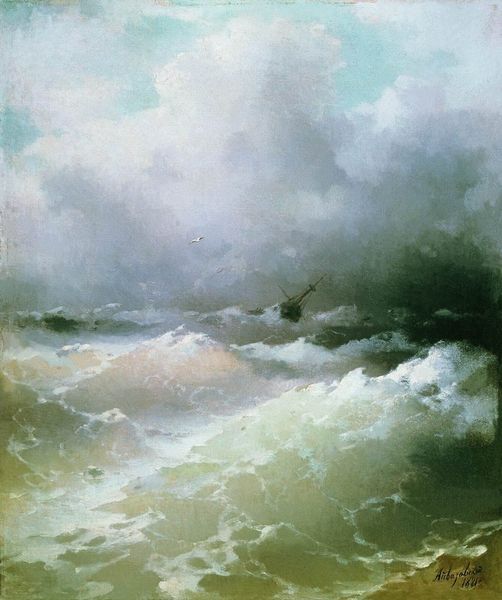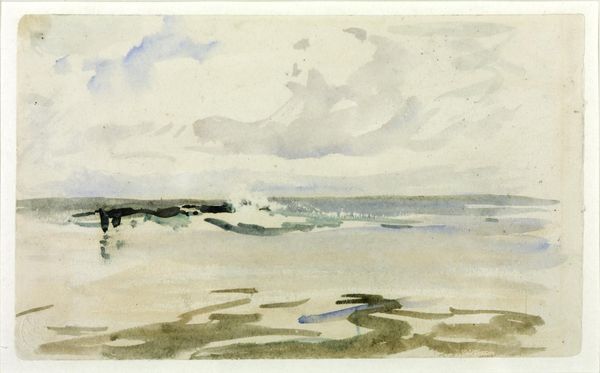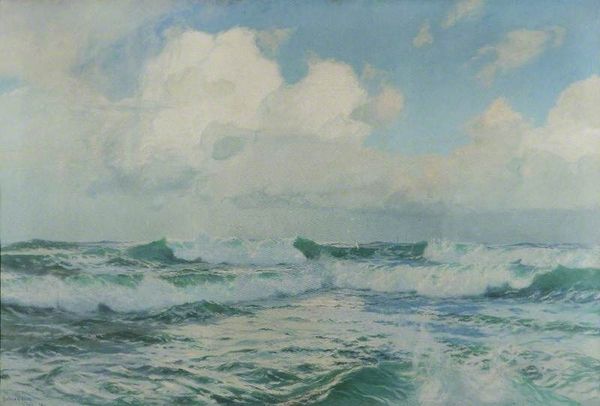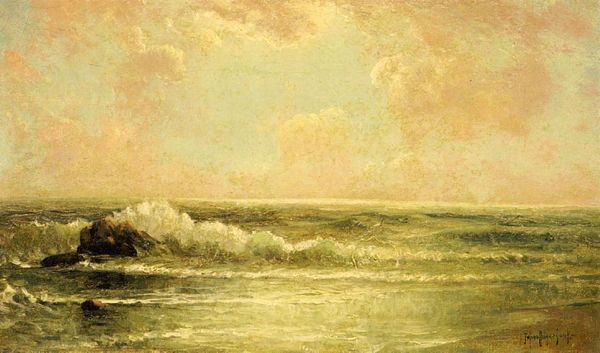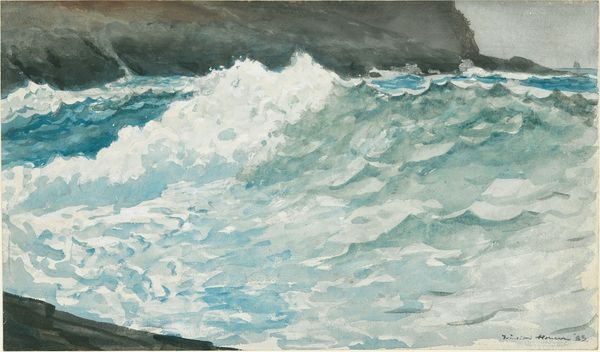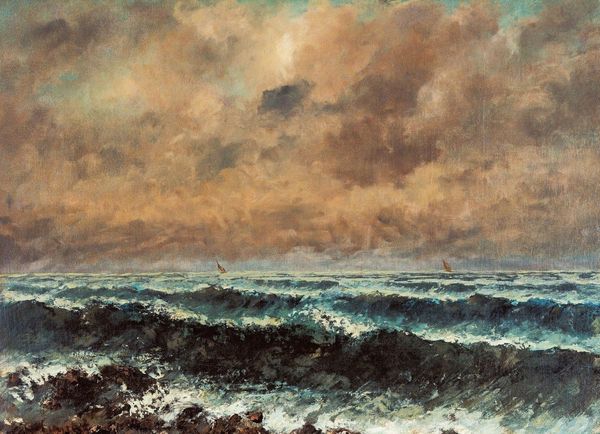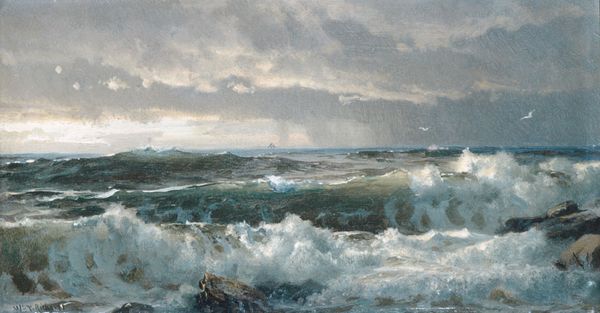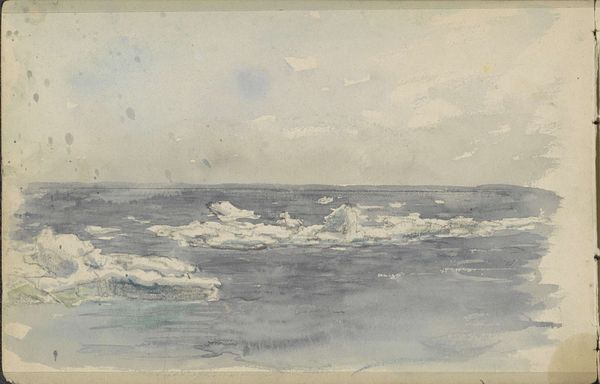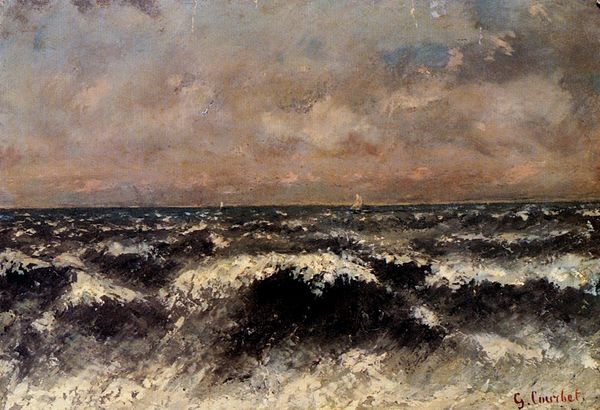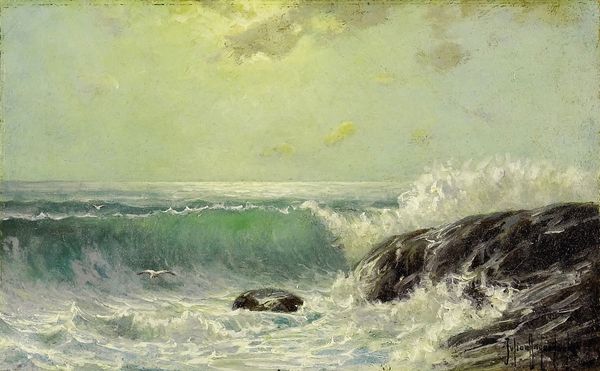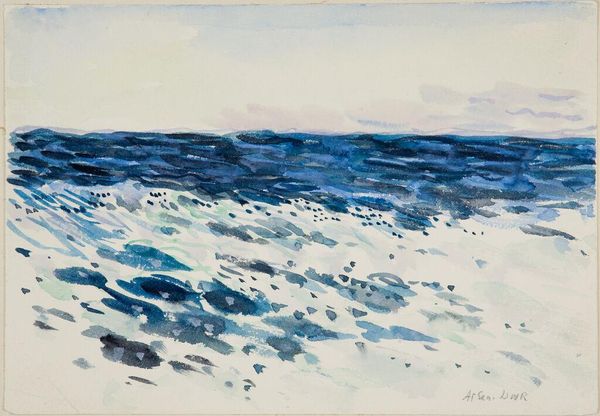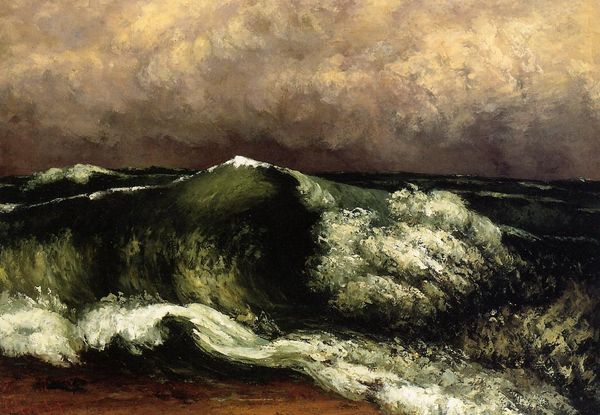
Dimensions: 13.97 x 24.13 cm
Copyright: Public domain
Curator: Here we have James Abbott McNeill Whistler's watercolor, "Blue and Silver The Chopping Channel," created around 1899. Editor: It’s so… immediate. You can practically feel the dampness in the air and the chill of the water. It captures a mood more than a detailed scene. Curator: Indeed. Whistler, despite his association with the Aesthetic movement, also engaged deeply with the realities of his time. The "Chopping Channel" refers to a busy shipping lane. We can't ignore the impact of industrialization. London was the biggest port in the world and a true global nexus in this era. Editor: Look at how the washes of blue and green are layered to suggest movement and depth. The application is so economical and yet evocative. The horizontal format reinforces the flat, almost infinite expanse of the channel, but do you think that the technique downplays the reality you mention? Curator: Well, that’s always been part of the critique. It aestheticizes an industrial space. We get an “art for art’s sake” version of gritty commerce, obscuring labor and capital with poetic vagueness. I should say there are some hints, you can notice some small dark elements, possibly the smoke of distant vessels if you are used to look for them! Editor: Perhaps. But the reduction to essential forms and tones – the way he evokes light reflecting on water with a few strategically placed white highlights, makes this almost purely abstract; if we only consider it formally. The very concept of capturing an impression on the plein-air makes the piece intimate. Curator: That's precisely what made Whistler controversial. Some see a commitment to beauty and innovation, and others saw a lack of social consciousness, especially considering the working conditions around the London docks. One must also recognize his need to escape a life of labor due to historical constraints regarding gender. Editor: These muted blues and greens work harmoniously, producing such a distinct visual field. It suggests depth with minimal detail; quite masterly. Curator: Whistler always walked a fascinating line between representation and abstraction. A lot like our perceptions. Editor: Yes, and there are many possible depths, depending where we decide to sail from, and what cargo our mind carry.
Comments
No comments
Be the first to comment and join the conversation on the ultimate creative platform.

